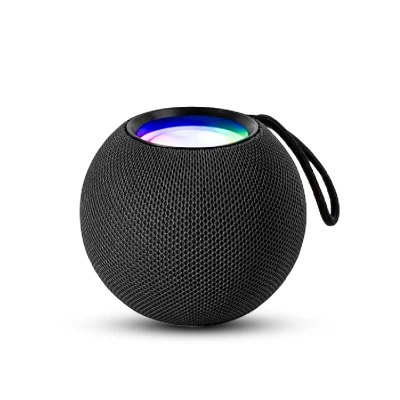Left unchecked, Europe’s narrow focus on AI investment will come at the health of half its population. As venture capital floods disproportionately into the AI sector, women’s health innovation — the definition of essential infrastructure — is once again left fighting for scraps.
In 2021, global femtech investment peaked at €1.89bn before plunging to just €1.1bn the next year, amid a tech funding apocalypse and capital making a headlong dash towards AI. Several factors contributed to this decline — broader market conditions, withering investor risk appetite, and natural sector maturation. But the surge in AI funding coinciding with a plunge in femtech investment highlights serious issues with capital allocation.
In 2023, European femtech captured a mere €164mn out of €8.3bn in healthtech funding. Meanwhile, across the pond, US femtech startups have raised €4.5bn since 2019. Unless Europe takes action now, the AI boom could severely compound what is already an acute health crisis — and set us back in a sector we once led globally.
Today, 44% of European femtech startups haven’t raised any funding at all, despite projections of a €30bn European femtech market by 2032. The disconnect between opportunity and investment is staggering.
This pattern repeats across the ecosystem. Talented founders with proven solutions for endometriosis, menopause, fertility, and maternal health are being overlooked. These are businesses that have a huge market and offer high returns — yet they struggle to compete for attention with the newest, shiniest general-purpose AI startup that comes across investors’ desks.
The irony is that while AI startups often draw the attention of investors by promising to predict future health problems, femtech founders — who’ve often already diagnosed existing crises and built working solutions — struggle for basic funding.
This is far from an anti-AI argument — plenty of us femtech companies are building genuinely useful AI applications for women’s health. Yet investors’ tunnel vision for general-purpose AI platforms leaves specialised healthcare solutions scrambling for leftovers.
There’s a human cost here, too. The fact that capital and talent are bypassing femtech isn’t just a missed investment opportunity, but a case of failing women’s health. The average woman with endometriosis waits seven years for a diagnosis. Up to 70% of women with polycystic ovarian syndrome (PCOS) remain undiagnosed worldwide. While these figures reflect a global crisis. European femtech solutions are not only vital for women in Europe — they can scale to address critical issues worldwide.
Far from solving these problems, general-purpose AI built without healthcare specialisation often exacerbates them. Research by UNESCO and UN Women, among others, shows that AI and LLMs built on biased data continually perpetuate male-default medical assumptions. This can lead to misdiagnoses, delayed treatment, and years of unnecessary suffering.
In 2024, female-only founding teams — who make up a significant proportion of femtech founders — received just 2% of global VC funding, compared to 84% for male-only funding teams. The disparity left critical gaps in women’s healthcare infrastructure. As someone with an all-female senior team who raised one of Europe’s largest-ever early-stage femtech rounds this year, I know firsthand how brutal the current fundraising process is.
Europe’s femtech future
Europe has historically been a leader in women’s health innovation, characterised by significant public investment, pioneering startups, and major policy leadership in gender-sensitive healthcare. The region is home to fellow femtech pioneers like Flo Health (UK), Clue (Germany), Natural Cycles (Sweden), and Ava (Switzerland). But this advantage is waning.
The AI bubble will continue its unpredictable journey. Femtech, on the other hand — defined as a category of products, services, and software designed to address women’s health and needs — isn’t going anywhere. Europe’s failure to recognise this puts it at risk of falling behind other regions that maintain diversified healthtech investments.
To start fixing the problem, we need a reframing. Recognise that femtech isn’t niche — it serves 50% of the global population. Pitch any other market of 3.9 billion customers and watch VCs stampede. Pitch women’s health to those same investors and watch them check their phones.
More materially, investors need to balance their AI investments with proven healthcare solutions. It’s not just about constructing socially responsible portfolios — there’s a vast, underserved market here just waiting to be unlocked.
That means building funds dedicated to femtech and backing more women-led investment teams, who actually understand the problems at hand. Far from just checking boxes, women-led teams are significantly better at understanding femtech investment opportunities — as noted by UNESCO — offering a familiarity with the sector’s problems and solutions that their male counterparts often lack. The evidence is clear: in Europe, countries with dedicated female angel investor networks see 27% higher early-stage funding rates for women entrepreneurs.
Policymakers must also reform R&D funding structures to ensure women’s health receives proportional investment. When public funding flows disproportionately to AI research, it signals that women’s health remains a secondary concern.
Europe can be a leader in both AI and femtech – these are far from mutually exclusive. The goal isn’t to slow AI investment, but to ensure femtech gets its fair share of capital allocation. If femtech isn’t moved from niche to necessity, history shows us it’ll fall by the wayside, as it’s long been critically overlooked, underfunded, and under-researched.
Femtech isn’t another bubble waiting to burst — women’s health needs don’t disappear when VCs jump aboard the next hype train. The choice we make now determines whether women will continue to be collateral damage in every new investment frenzy.
If Europe continues to ignore femtech, the price won’t just be lost returns. It will be women waiting years for a simple diagnosis, living with untreated conditions, and suffering from problems we already know how to prevent. Although women live longer than men, we spend 25% more of our lives in poor health. That’s a cost investors can’t keep overlooking.

 Neckband
Neckband
 Power Bank
Power Bank
 Wireless speaker
Wireless speaker
 Bluetooth Tws
Bluetooth Tws
.webp) Smart watch
Smart watch
.webp) Accessories
Accessories
